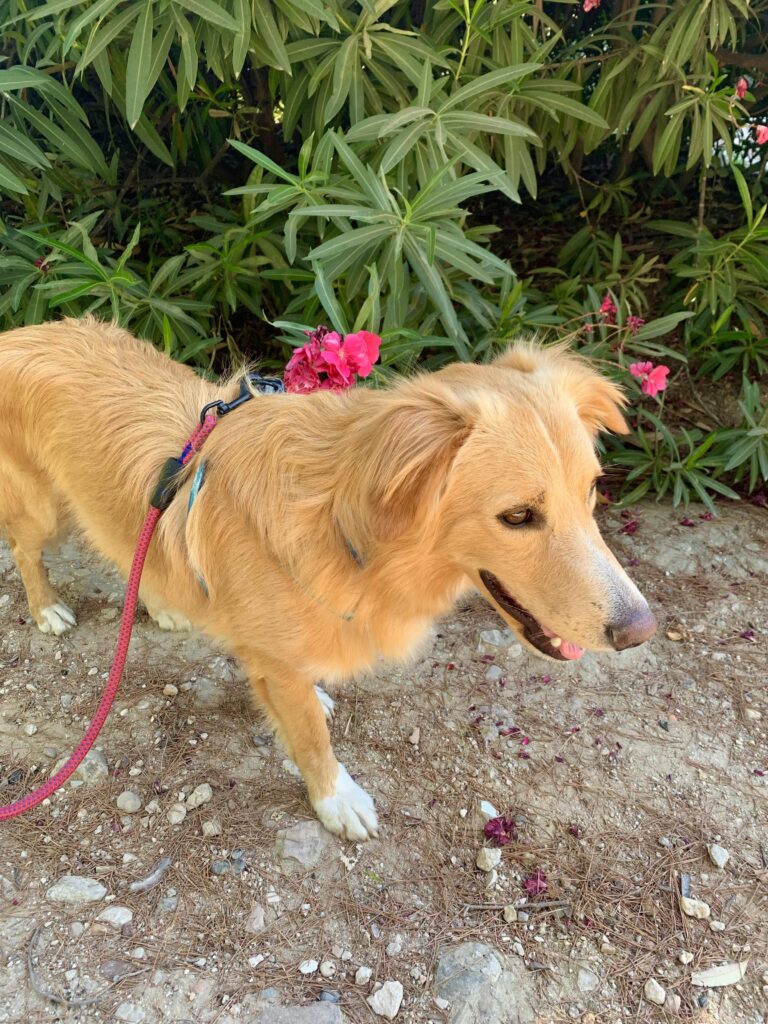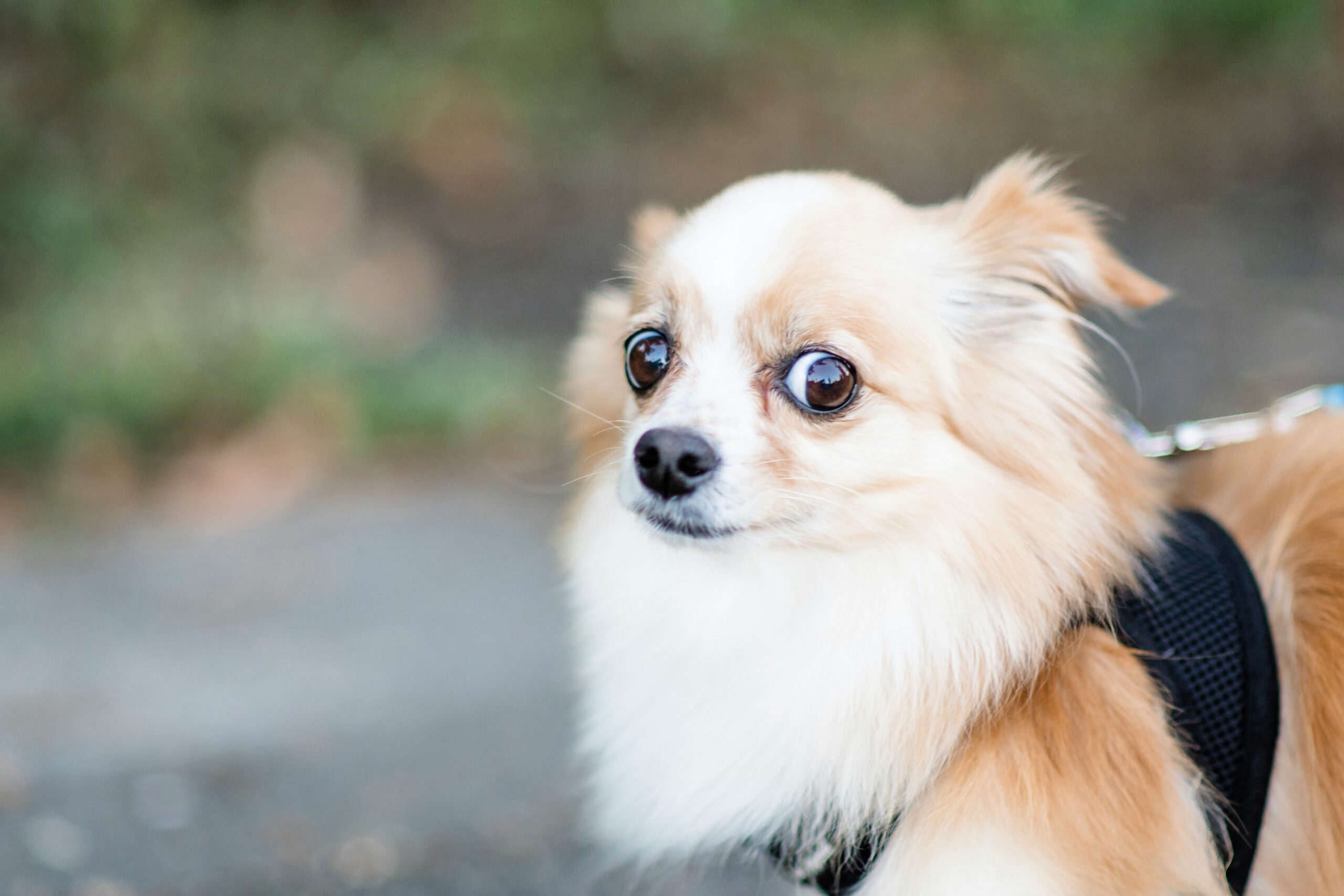Dogs, just like us, have their quirks, and sometimes those quirks manifest as reactivity. While it may sound like a canine superhero power, dog reactivity is more like a dog’s way of saying, “Hey, I’m not quite sure about this!” In this article, we’ll take a deep dive into the world of reactive dogs, exploring the what, why, and how of their behavior. 🐾
Meet Rocket: Our Inspiration
If you’re reading this, you’re probably curious about canine reactivity, and like me, you’ve got a furry friend with special personality traits. Now, let’s take a moment to introduce you to Rocket, a lively 2-year-old mix of Golden Retriever and Border Collie.

Rocket’s reactivity was inspiration for this article. Having recently been adopted, he is settling into his new life and relaxing with his new family.
So, with Rocket as our guide, let’s explore the topic of dog reactivity.
Introduction
Reactivity in dogs is a complex behavioral issue that can be challenging for both pets and their owners. It is crucial to understand the underlying causes, symptoms, and effective management strategies to help our canine companions lead happier, healthier lives.
What is a Reactive Dog?
A reactive dog is one that exhibits exaggerated or aggressive responses to certain stimuli, often resulting in behaviors like barking, lunging, growling, or even biting. This reactivity is typically a defensive reaction, driven by fear or discomfort, and can be directed towards other dogs, people, or various environmental triggers.
Which Dog Breeds are Reactive?
While reactivity is not exclusive to any particular breed, some breeds are more predisposed to this behavior due to their genetic traits and temperaments. It’s essential to note that individual temperament can vary widely within any breed. Here are some breeds that may be more prone to reactivity:
- Terriers: Terrier breeds, such as the Jack Russell Terrier, Bull Terrier, and Fox Terrier, are known for their strong prey drive and can be prone to dog-to-dog reactivity.
- Guard Dogs: Breeds bred for guarding, like the German Shepherd, Rottweiler, and Doberman Pinscher, may exhibit reactivity if not properly socialized and trained.
- Herding Breeds: Dogs like the Border Collie and Australian Shepherd, which have strong herding instincts, might show reactivity towards moving objects or animals.
- Working Dogs: Breeds bred for protection and work, including the Belgian Malinois and Boxer, can display reactivity when they perceive a threat.
- Rescue Dogs: Dogs with unknown or traumatic backgrounds, often found in rescue organizations, may exhibit reactivity due to past experiences.
It’s crucial to remember that breed tendencies should not be generalized to individual dogs. Proper training, socialization, and a loving environment can help mitigate reactivity in dogs of any breed. Additionally, mixed-breed dogs may inherit traits from multiple breeds, making it essential to focus on the individual dog’s needs and behaviors.
If you have a dog prone to reactivity, regardless of their breed, proactive training and management can make a significant difference in their behavior and overall well-being.
Symptoms of Reactive Behaviors in Dogs
Identifying reactive behaviors in your dog is crucial for early intervention. Common symptoms of reactivity include:
- Excessive Barking: Dogs may bark excessively at perceived threats, strangers, or other dogs, often with raised hackles and a tense body posture.
- Lunging: Reactive dogs may lunge towards the trigger, attempting to get closer or show dominance.
- Growling: This vocalization is a warning sign that the dog is uncomfortable or anxious, and it may escalate into aggression if the perceived threat persists.
- Aggressive Behavior: Reactivity can manifest as aggressive actions, such as snapping, biting, or even attacking.
- Pacing or Restlessness: Some dogs may exhibit restlessness or pacing when confronted with a trigger, unable to settle down.
- Body Language: Watch for signs like ears pinned back, raised fur, tail between the legs, and a stiff or tense body, which indicate anxiety and discomfort.
What Can Cause a Dog to Become Reactive?
Several factors can contribute to a dog developing reactivity:
- Lack of Socialization: Insufficient exposure to various stimuli during a dog’s critical socialization period (typically 3-14 weeks of age) can lead to fear or anxiety.
- Negative Experiences: Traumatic encounters with other dogs, humans, or situations can trigger reactivity. These experiences may involve aggression, abuse, or accidents.
- Genetics: Some breeds have a genetic predisposition towards reactivity. However, upbringing and environment play significant roles in whether these traits manifest.
- Fear or Anxiety: Chronic fear or anxiety can make a dog more prone to reactive behaviors. Common triggers include loud noises, crowded places, or past traumatic experiences.
- Resource Guarding: Dogs may become reactive when guarding their possessions, such as food, toys, or territory.
Types of Reactive Behavior in Dogs
Reactive behaviors can manifest in various forms, each requiring tailored approaches for management and training:
- Dog-to-Dog Reactivity: Dogs react aggressively or fearfully to other dogs, often during walks or when meeting unfamiliar canines.
- Dog-to-Human Reactivity: In this scenario, dogs exhibit reactive behaviors towards people, whether they are strangers or known individuals.
- Leash Reactivity: Dogs may become reactive when on a leash, feeling confined and unable to escape perceived threats.
- Barrier Reactivity: Some dogs become reactive when they are behind a fence, window, or any barrier that separates them from the trigger.
Managing Reactivity in Dogs
Effective management of a reactive dog is crucial for the safety and well-being of both the dog and those around them. Here are some strategies:
- Positive Reinforcement: Reward desired behaviors with treats, praise, or toys to encourage calm responses.
- Desensitization: Gradually expose the dog to the trigger in a controlled manner, increasing their tolerance over time.
- Counterconditioning: Pair the trigger with something positive, such as treats or play, to change the dog’s emotional response.
- Avoid Triggers: When possible, avoid situations or environments that trigger reactivity to prevent negative experiences.
- Seek Professional Help: Consult with a certified dog behaviorist or trainer experienced in reactivity for personalized guidance.
Modifying/Training for Reactive Dogs
Training a reactive dog is a patient and ongoing process. Some key training techniques include:
- Focus Command: Teach your dog a “watch me” or “look” command to redirect their attention away from triggers.
- Basic Obedience: Solidify basic obedience commands like “sit,” “stay,” and “leave it” to maintain control in reactive situations.
- Gradual Exposure: Gradually expose your dog to triggers at a distance where they remain calm, rewarding them for appropriate behavior.
- Behavior Modification: Work with a professional to develop a customized behavior modification plan to address your dog’s specific triggers.
FAQs
Q1: Can all dogs become reactive? A1: While reactivity is more common in some breeds and individuals, any dog can become reactive if exposed to the right triggers or adverse experiences.
Q2: Can reactivity be completely cured? A2: Complete “cure” may not be achievable in all cases, but many reactive dogs can improve significantly with proper training and management.
Q3: Can medication help with reactivity? A3: In some cases, medication prescribed by a veterinarian can complement behavior modification efforts by reducing anxiety and fear.
Q4: Is it safe to adopt a reactive dog? A4: With patience, training, and proper management, adopting a reactive dog can be a rewarding experience. Seek professional guidance if you’re considering adopting a reactive dog.

